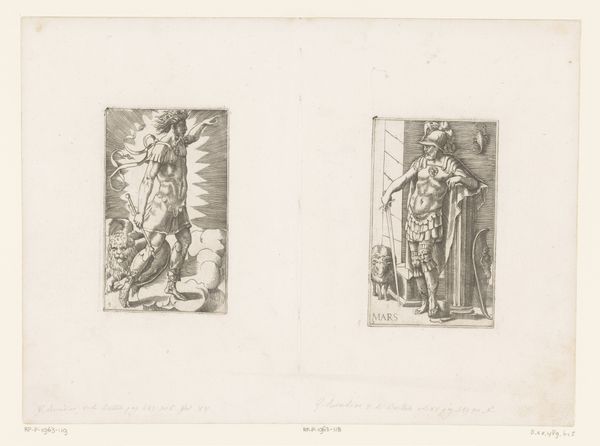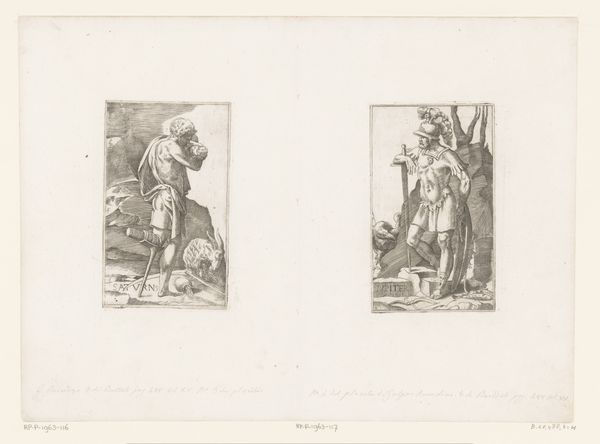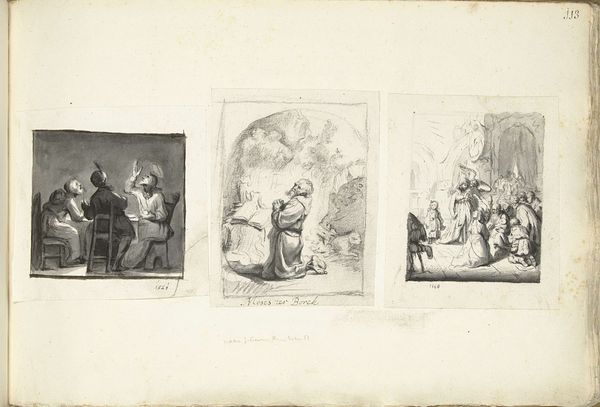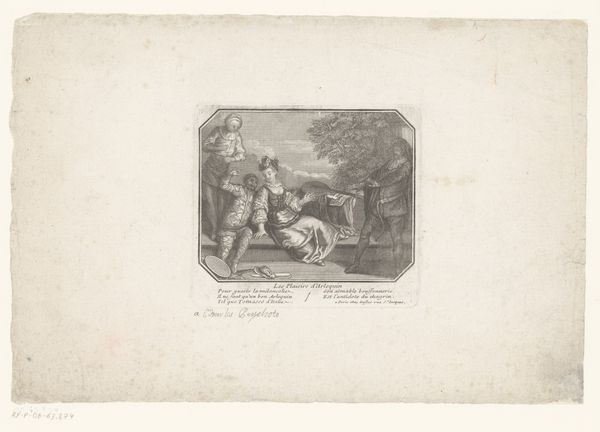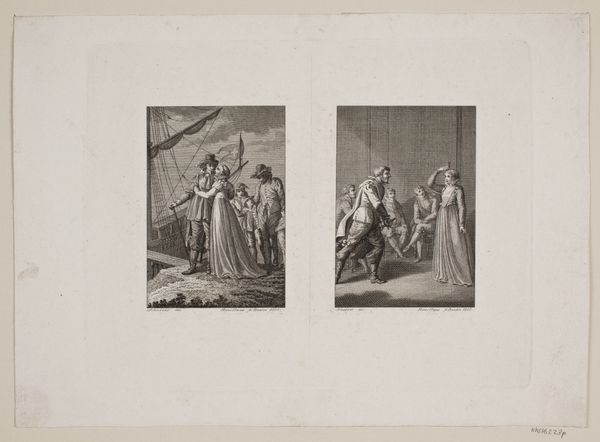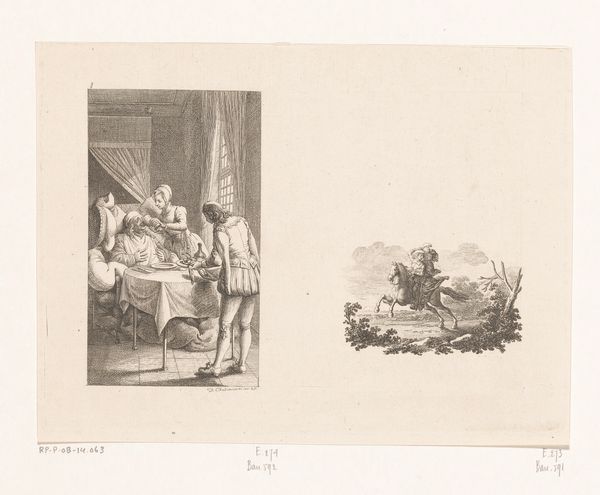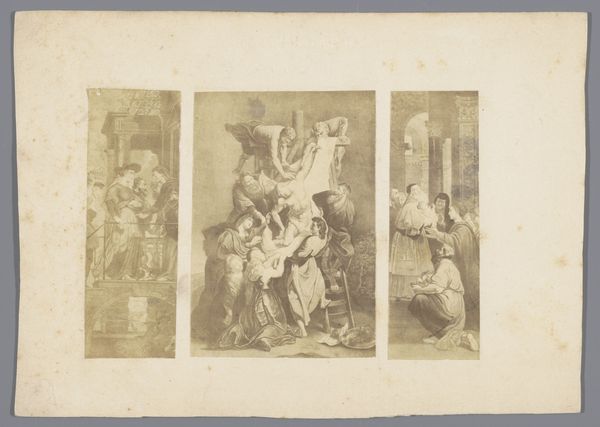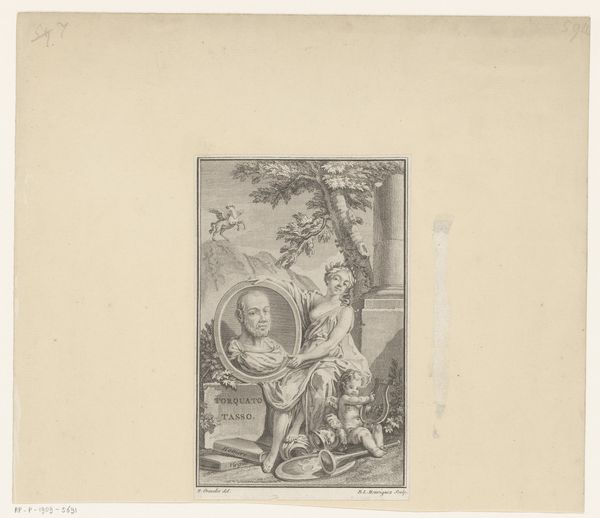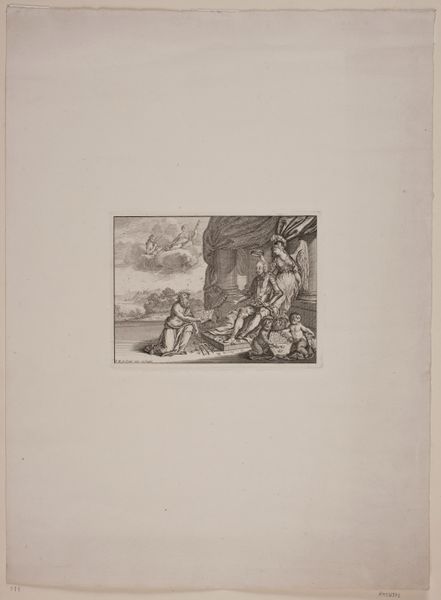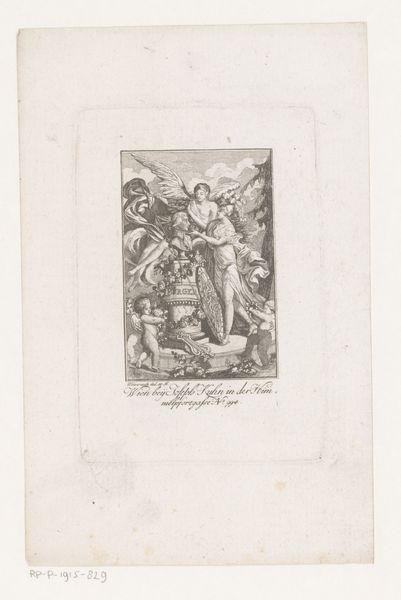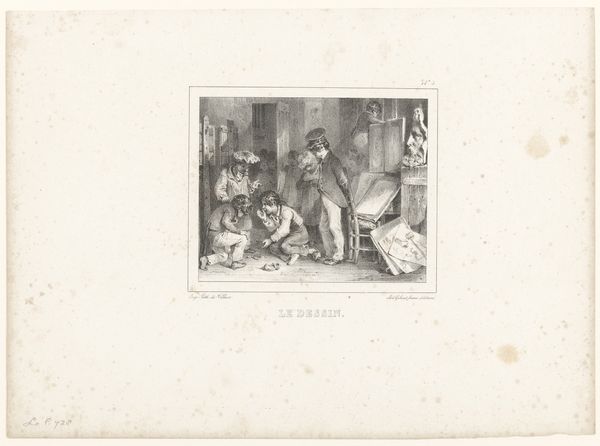
Mercurius met achter hem personificaties van de sterrenbeelden tweelingen en maagd 1536 - 1569
0:00
0:00
georgesreverdy
Rijksmuseum
print, engraving
#
allegory
# print
#
old engraving style
#
mannerism
#
figuration
#
history-painting
#
engraving
Dimensions: height 151 mm, width 91 mm
Copyright: Rijks Museum: Open Domain
Curator: Here we have a print entitled "Mercurius met achter hem personificaties van de sterrenbeelden tweelingen en maagd", dating from between 1536 and 1569. Georges Reverdy is credited with this engraving, which is currently housed in the Rijksmuseum collection. Editor: My first impression is that of a dynamic and rather crowded composition. It feels like the artist is trying to convey a lot within a small space. The figures appear quite animated despite the medium. Curator: Exactly. Reverdy created this print during a time when mannerism was at its peak, and this artistic style clearly shows with the distorted human forms, exaggerated poses, and a general sense of tension that we can easily note. The emphasis on allegory is quite telling too, providing a gateway into the socio-political forces and patronage systems that drove such works. Editor: It’s interesting how Mercurius, or Mercury, the Roman god of commerce and communication, stands alongside these figures representing astrological signs. I’m particularly curious about how such images circulated at the time, influencing social norms and perceptions. What was the role of an accessible image such as this, compared to say, the grand paintings commissioned by the elite? Curator: It provides a point of access, does it not? Prints like these, though still catering to a specific audience with a certain degree of literacy and cultural knowledge, allowed for wider distribution and dissemination of ideas. How might we explore, for example, how the depictions of gender in these allegorical figures reflected or reinforced the era's gendered expectations? Editor: Well, in Mercury's case, we see this powerful figure seemingly controlling or leading other figures. I do think this speaks to larger notions around patriarchal systems and power structures as were made commonplace and proliferated widely through printed matter and paintings of this era. What narratives of dominance were considered permissible in that era and what ideologies were those visual narratives supporting? Curator: It speaks of commerce, intellectual agility, perhaps even deception—all attributes tied to this male god and, consequently, mirrored, and reinforced through society in many facets of life. These details give insights into the public function of images. Editor: Absolutely, and situating that function within an intersectional narrative allows for richer understandings. Thank you. Curator: Agreed. A brief look into a powerful time in art history!
Comments
No comments
Be the first to comment and join the conversation on the ultimate creative platform.
